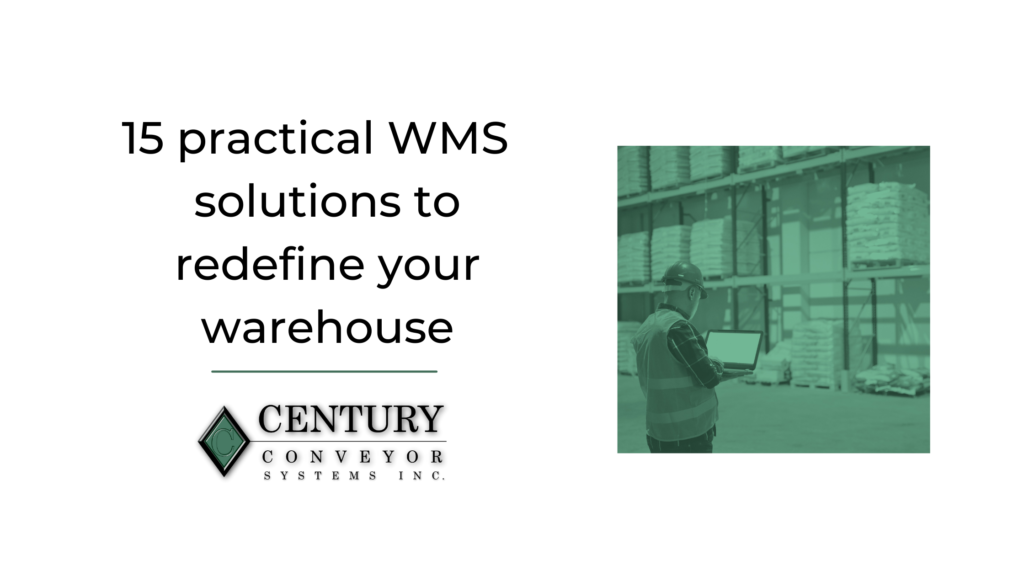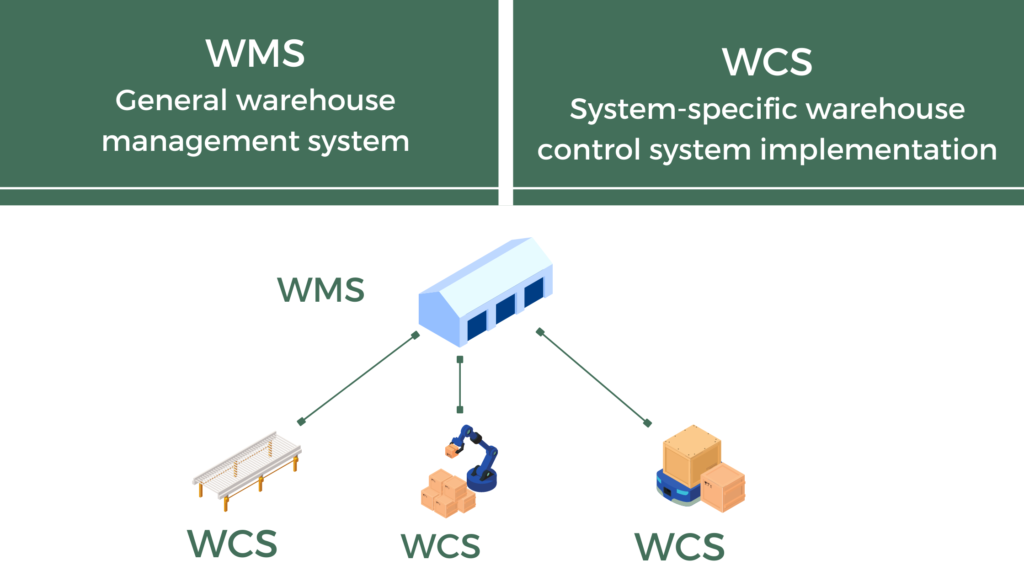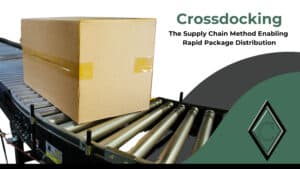
A warehouse management system, or WMS for short, is a powerful control tool that gathers various amounts of information to process tasks and prepare reports. WMS hubs offer a vast array of warehouse functions, all aggregated into an interlinked operating system. The main goal of a WMS is to monitor and manage warehouse operations involved in the movement of products and packages.
A few examples of popular WMS solutions include:
Each solution varies slightly based on the provider, but generally, all offer some form of the solutions outlined in this article.
Century Systems has experience in integrating WMS solutions, and we’re acutely aware of the exponential benefits a WMS can provide. Here’s 15 functions a warehouse management system can use to efficiently transform your warehouse operation.
1. Error Reporting
A critical component of any operation is the ability to quickly identify and correct errors that occur, whether it be a simple box jam, or a system failure that requires a diagnosis. Errors will typically be displayed as emergency notifications on your user interface and navigated to the message will detail the error code and the location of the offending system.
2. System Integration
Maintaining visibility and control of your integrated automation systems is important to manage a successful WMS. WCS or warehouse control systems are software applications created by automation solution manufacturers to offer expanded functionality. WCS’ are designed to integrate seamlessly into your WMS, in turn, both sharing information, and configuration.

3. Inventory Visibility
Knowing the explicit details of every SKU, pallet, carton, or order and exactly where they are located is a powerful tool to implement. A WMS will log scan touchpoints, tracking every movement and the associated operator the product interacts with. Having this information ensures no products get lost, and that processing timelines are accurate and detailed.
4. System Statistics
Monitoring the status of each of your systems is vital to keeping a warehouse operation running smoothly. Typically a feature with a WCS solution, this view displays system output rates (CPM, LPH), faults, logged actions, and much more.
A system may display statistics such as:
- Number of cartons inducted
- Number of cartons scanned
- Number of cartons recirculated
- Number of cartons where the bar code could not be read
- The TCP/IP address of the machine
- A timestamp showing when the application was last started
- The number of carton records (bar codes) in memory
5. Settings Configuration
Along with receiving solution stats, many automation systems offer settings that can be fine-tuned for a variety of handling applications. Whether it be adjusting the output rate or turning off functions, every solution has a variety of manufacturer-specific settings to toggle.
Keep in mind, care should be practiced when changing these settings. Typically, the manufacturer or an engineer should be consulted, as adjustments can impact downstream operations greatly.
6. Product/Carton Tracking
Ever lose a product within the warehouse? A WMS makes sure that every single item, carton, or pallet is accounted for, and if something is misplaced, that it can be corrected by following the scan touchpoint history.
While an unfortunately common issue, losing items within a warehouse can be a recurring disaster that can take hours to resolve without a well-tracked WMS.
7. Benchmarking and Key Performance Indicators
For continuous improvement, warehouse performance goals can be created and data aggregated for analytic purposes. Observing this data on a daily basis helps scrutinize where corrections can be made, and a variety of statistics can be recorded and viewed.
8. Productivity Reporting
Productivity reports give you a way to gauge how productive your systems have been during a certain timeframe. You can enter a begin date and time, end date and time, and a system. The reports will display information, such as:
- Number of items inducted on
- Number of items diverted off
- Number of bar codes that could not be read
- Number of times items had to be recirculated
- Average number of products per day
- Maximum number of products per day
9. SKU Management
A WMS can store all relevant SKU information in a library, for thousands of products. An inventory analyst, purchasing, or demand planner can use this information for real-time product visibility. The ability to monitor the daily movement of products speaks volumes about the usefulness of such a function and is essential for a company the handles a large portfolio of SKUs, like a wholesaler or a distributor.
10. Order Manifest
A WMS can retrieve specific order information as soon as a confirmation is made, providing all pertinent processing data to packing operators. Each scan point within the warehouse will be logged into the tracking for the package, and additional WCS systems (like a print-and-apply) can tap into order information to expand functionality and increase automation.
Orders will be recorded in a history view, and can be accessed at any point when needed. This provides valuable reverse-logistics data when a return happens, or for automatic re-ordering of items on a continuous subscription routine.
11. Stock Level and Replenishment
Accurate replenishment reporting is vital in keeping product stock flow consistent and scalable. WMS’ can be configured to send alerts at certain stock level intervals, automatically re-order items, and develop a replenishment routine timeline according to current demand.
12. Picking
Empowering warehouse associates with powerful WMS tools extends to item picking. A WMS will give them exact coordinates to item locations, quantity, packing and shipping information, and more, either at a terminal or with a handheld device running the WMS operating system.
If interfacing with WCS picking modules, employees can instruct automated systems to retrieve an item, carton, or pallet- all from their WMS-enabled device. This enables faster, more efficient picking operations.
13. Invoicing
Financial reports, invoicing, and general accounting information can be implemented with an ERP (enterprise resource planning). Having this information avoids EOL headaches with fees, and increases visibility into budget allocated towards product transportation.
14. Scheduling
The reporting and demand information acquired from a WMS can be used to direct scheduling for incoming product cycles or operation developments. Integrating the WMS information with an ERP can cultivate accurate forecasting, making inbound and outbound scheduling more potent.
15. Transportation
Interfacing with a transport management system (also known as TMS) provides insight into external operations once the product leaves the warehouse. A TMS provides freight management tools, transportation details, reports, and route information. While not required to implement a WMS, a TMS provides expanded visibility into shipping and delivery, creating opportunities for continuous improvement. Many 3PLs and carriers offer a TMS system that can easily integrate into a WMS.
A WMS is a valuable tool, and any warehouse expecting growth should consider implementing such a capable and dynamic platform. Its Swiss-army-knife set of options, simple usage, and adaptable nature make it a must-have for any fast-moving warehouse.






